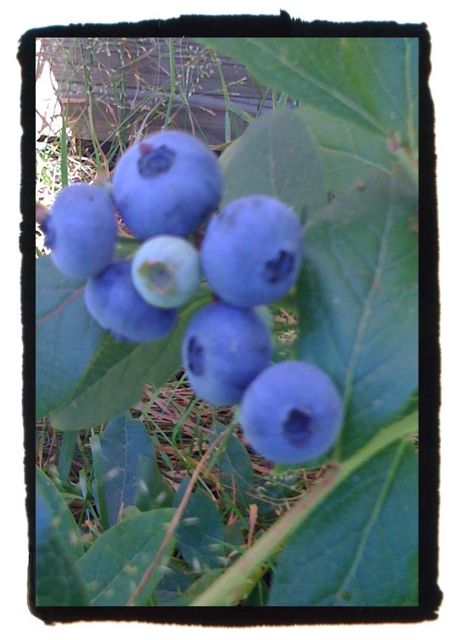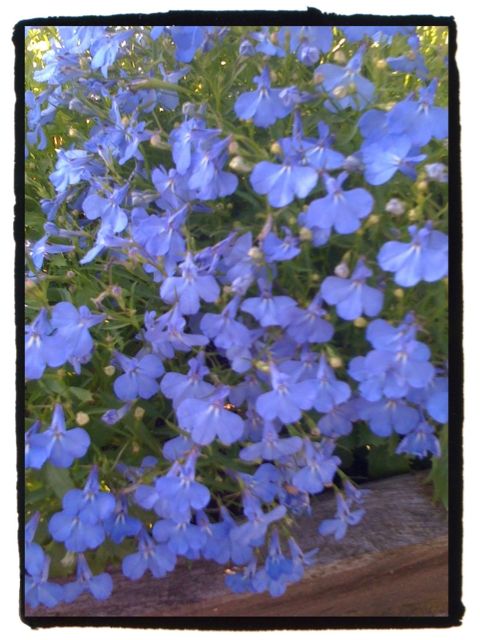Pages
Blog Stats
- 7,556 hits
-
Recent Posts
Archives
Categories
- #saladchat apricot aquilegia Ariège Arp bergenia Bethmale biscuits blackcurrent blueberry cat Champ de Mars coppicing coriander countryside courgette cowslips Cream Cream garden crocus daffodils dawn dicentra dried flowers Einstein Elderflower forest garden France garden garden design greenhouse Herb Circle hummus jam kitchen terrace kiwi lake La Soumère laurel lobelia Cambridge Blue lupin lupins marmalade May moss mountains nepeta parsley pea sprouts phacelia photos Pic de la Quere Plane trees plastic potager potting shed quinoa recipe rhubarb salad Salat sedum snow Sprouting St Girons tradescantia trees weather weeds willow Winnie the Pooh winter Wisley witch hazel ww
Gardening blogs
- Carl Legge Food, gardening and permaculture
- Midnight Brambling The interesting and informative goings on of Lia Leendertz
- Otter Farm Plants and other stuff from the king of the edibles
- Red Dirt Ramblings Dee Nash from Oklahoma
- The Patient Gardener
Other good blogs
- Love and a Licked Spoon Recipes and much, much more from Deborah Robertson
Wordpress stuff
-
Gravatar
Monthly Archives: July 2010
And if you get it wrong you’ll get it right next time
In the first chapter of A.A. Milne’s Winnie the Pooh Christopher Robin and Pooh are climbing the stairs to bed. Christopher Robin is dragging Pooh behind him by one leg and on each rise Pooh bangs his head on the step below. Pooh is sure that there must be a better way of going upstairs and equally sure that he could work it out if only his head didn’t hurt so much.
Like poor old Pooh I too have been banging my head against something hard and unyielding, in my case the creation of a garden from a field. Just as Pooh does eventually get upstairs to bed, I am turning more and more of the field into very attractive and interesting garden, but, just like Pooh, at a price.
I have not truly enjoyed my gardening for more than a year. There have been good periods of course, evenings sat sipping kir with the heady perfume of nicotiana wrapping itself around us, the first flowers on a young lilac, the herb circle loud with the buzzing of bees, humming bird moths on the Verbena Bonariensis and leisurely lunches with friends. But always for me there was a background pressure, a feeling of being overwhelmed by the work required.
And always too there was the feeling that all that was needed was a bit more effort and a bit of luck – the game of if’s and maybe’s: if I hadn’t broken my wrist eighteen months ago, maybe this summer won’t be so dry, if the last two winters hadn’t been so harsh, if I can just get this area clear of weeds, etc, etc, etc. So I would get up each morning, after yet another bad night, more tired and more dispirited than the day before. Bumpity, bump, bump, bump.
Who was it said that you don’t solve problems by using the same thinking that you used to create them? Possibly Albert Einstein. But before you can do some new thinking you have to stop, step back and see the wood for the trees.
One morning a few weeks ago I woke exhausted, the French have the perfect word for it – épuisé – literally the well is dry. I could barely drag myself around the garden, much less do anything. I switched off from the whole topic and finally, several days later, I could think straight again.
And what I can now see is that the problem breaks down into two fundamental errors:
1. We have tried to do too much too soon.
2. Our gardening practices are inefficient and labour-intensive.
Apart from that we are fine!
I can see why this has happened. Before we moved to France we had spent several years living in a motorhome, saving hard to buy a piece if land. We had not had a garden for a long time and never anything of this size and we understandably got caught up in the excitement of creating something that was ours and very personal. As each new garden space was developed its neighbour started to yell ‘Me now’ in a hard-to-ignore voice.
In the past my houses had had establishd gardens when I bought them so this was the first garden that I had ever designed. The first garden but the second design. The first design was based on an incomplete survey and badly underestimated the slope of the land – it was unworkable and had to be scrapped. The second design, done in a tiny office on a horrible building site near Reading, works well and I am really proud of it.
The second error was poor gardening practice and I am not beating myself over the head about this either. As I said, we had only ever had small gardens and my interest in gardening is relatively new and what I know is largely based on a handfull of books and television programmes. We had decided not to use any chemicals on the Iand, yet I knew nothing about organic gardening practices.
The land around here is a mixture of pasture and woodland. I doubt if it has ever seen pesticides or herbicides and consequently is rich in plant species. We have wonderful wild orchids, cowslips, pulmonaria, scabious and cornflowers plus more troublesome yarrow, fat hen, dandelions, chickweed, grasses of course and lots of other ‘weeds’ whose names I don’t know. The weeds grow vigourously in our climate, thanks to an annual rainfall in excess of 1 metre, hot summers and warm autumns.
The first year our neighbours kindly gave us tons of horse manure, which was great apart from the millions of seeds of a plant that became known unaffectionately as The Purple Jobby which appeared everywhere we spread the manure. We spent many hours the next year digging it out. It threatened to overwhelm the grass in a newly sown lawn and The Womble removed every bit from 100 square metres – with a screwdriver! We won that particular battle, we rarely see The Purple Jobby now.
You simply cannot clear an area, rotivate it or dig it over and then leave it, yet that is what we did. Or we filled it with young plants and/or seeds and watched them being swamped by the weeds. And still we continued to make new gardens, still thinking that we could win the battle with just a bit more effort. Gradually I learnt about mulching and green manures and no-dig gardening, and we are starting to be more efficient, but it takes time when you are already on the back foot.
The biggest lesson I feel I have learnt is that you cannot fight nature. It has been at this game longer than us and it will win. You have to work with it. Just about the time I started to go into free-fall I heard about forest gardening, a very different approach which does just that – it works with nature. I am now in the process of learning about it and seeing how I can incorporate its ideas into the garden. For the first time in a year I feel very positive about what we can achieve here.
I am now taking a break from gardening for the summer, doing as little as possible simply to keep things ticking over. The garden will not look as good as it did last year, and I don’t mind that. I am giving myself the time to do other things, the time too to just sit in the garden and look at what we have achieved and what we will achieve in the future. I’ll restart in the autumn, rested, newly enthused and with a plan. I am determined that from now on we will do things at a manageable pace. And I am going to enjoy my lovely garden once more. What other reason is there to have one?
Notes:
• Pictures (for no particular reason) are of valerian, Corsican mint and Pogo in relaxed mood
• I borrowed the title for this post from an excellent song by Gerry Rafferty.
• A big thank you to Ikea in Toulouse for the use of their WIFI – a tad faster than my usual connection!
Posted in Uncategorized
Tagged Einstein, forest garden, garden, garden design, weeds, Winnie the Pooh
Courgette Jam
The courgette glut is here again, at least it is for most people. My first plants succumbed to the odd weather this year and the replacements are still tiny. The Womble, not a big fan of the courgette, considers this to be A Good Thing.
In response to joking references on Twitter to courgette jam as a possible use for the surplus, I can now reveal that the humble courgette can indeed be turned into jam. Strictly speaking it is marrows (courges in French) not courgettes which are used, but given that the French tend to call them courgettes even when they are so big you need a wheelbarrow to move them and given also that little courgettes can turn into thumping great marrows at the blink of an eye, courgette jam it is.
I came across its use originally in a French translation of an English book on preserves where I found a recipe for marrow marmalade, made with a mixture of oranges and marrow. It had a very pleasant, rather softer flavour and texture than 100% orange marmalade and I liked it. The Womble was less keen, finding it not tangy enough. Unlike normal marmalade it did need added pectin to get a good set since there is none in the marrow.
My next ‘courgette jam’ was my own invention: blackcurrent and marrow. Last year was the first year I had more than a handful of fruit on my young blackcurrent bushes but it still wasn’t enough to make many jars plus we both find blackcurrent jam a bit too powerful a flavour. The addition of marrow softened the flavour a bit and padded out the precious fruit. The result was very good indeed and I would certainly repeat it. Unlike the marmalade there was no need to add pectin, the blackcurrents had more than enough to carry the marrow.
I can’t give you a recipe since I didn’t write down the proportions I used but I don’t know that it really matters. If you want to try it just make up some of the fruit weight with marrow and add sugar in proportion to the total weight as you usually do. Obviously the more marrow the milder the taste. I cut the marrow into tiny cubes about the same size as the blackcurrents and cooked the fruits seperately until soft then combined them which gave me control over cooking time for each.
And there you have it – you really can make jam from courgettes. Give it a try or invent your own combination and bon appetit.







